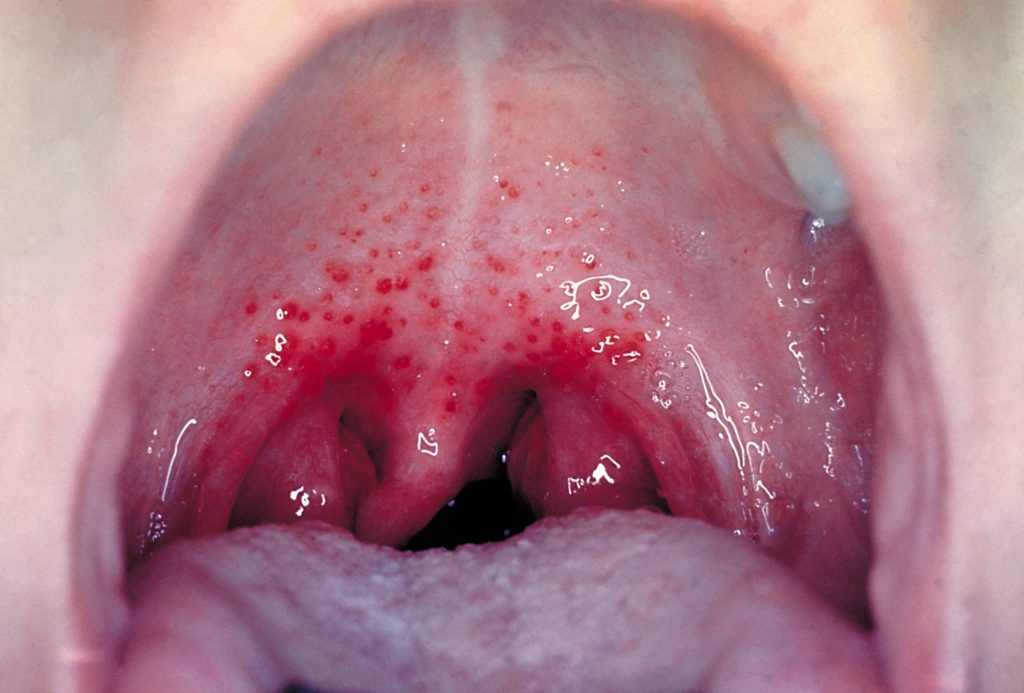
The Centers for Disease Control and Prevention is monitoring an increase in invasive group A Streptococcus infections in children.
"Group A streptococcal disease is a group of conditions caused by a bacteria called 'group A strep,'" says Dr. Nipunie Rajapakse, a pediatric infectious diseases physician with the Mayo Clinic Children's Center. "The one that people are probably most familiar with is strep throat. Strep throat is a relatively common infection, especially in children of school age — between ages 5 and 15. It's very unusual in children under 3 years of age."
Rarely, group A strep can become invasive and spread to other parts of the body, like the blood or the brain, and cause serious, life-threatening illness.
Watch: Dr. Nipunie Rajapakse explains the signs of strep throat in children.
Journalists: Broadcast-quality sound bites with Dr. Rajapakse are available in the downloads at the end of the post. Please courtesy: "Mayo Clinic News Network." Name super/CG: Nipunie Rajapakse, M.D./Pediatric Infectious Diseases/Mayo Clinic.
Signs and symptoms of strep throat
It's common not to have a cough, sneezing or runny nose with strep throat. Those are signs of a viral infection, such as a cold.
"Childhood strep throat might have symptoms that consist of severe sore throat, usually with pretty rapid onset. They might have a fever. They might have enlargement of the lymph nodes, the little nodes in the front of the neck. And if you look at the back of their throat, it probably looks red, and they may have pus on their tonsils."
Look for these signs of strep throat:
- Rapid onset of severe sore throat
- Painful swallowing
- Fever
- Swollen, enlarged lymph nodes in your neck
- Tiny red spots back of the throat, the roof of your mouth
- Red, swollen tonsils may have white patches or pus
Test for strep throat
The only way to be sure of a strep throat diagnosis is to get tested. A swab of the back of the throat can detect whether the bacteria are present or not.
"It's important to recognize that if your child has a sore throat, but it comes along with other symptoms, like a runny nose and cough, it is much more likely that that is being caused by a virus and not bacteria," says Dr. Rajapakse.
"That's why it's important to talk to your child's health care professional because they can sort through the symptoms and decide whether it sounds reasonable to test your child for strep throat or if their sore throat is more likely to be caused by a virus," she says.
Treating strep throat
Dr. Rajapakse says strep throat requires antibiotics to treat it. Unlike colds or flu, which are viral infections and cannot be helped with antibiotics, strep throat is caused by bacteria.
"We treat this infection for a number of reasons. One is it can make your symptoms go away much faster. Two is that it decreases the chances of spreading it to someone else. And three is to prevent future complications. There are a few complications. People might be familiar with rheumatic fever, for example, where we know that treating strep throat reduces your risk of having those complications, " says Dr. Rajapakse.
Amoxicillin shortage
An ongoing shortage of amoxicillin, a common antibiotic to treat strep throat has led pharmacists and medical teams to find alternatives.
"If you run into a situation where you've been prescribed amoxicillin and you're not able to find it for your child, it's really important to talk to your pharmacist as well as the health care professional who prescribed the medication because there are other alternatives that can be used," says Dr Rajapakse,
Dr. Rajapakse says if this happens, your pharmacist and health care professional should be able to recommend a different antibiotic, or they can advise you on how to use a different formulation of amoxicillin that is available — for example, crushing a tablet or opening a capsule if your child is not able to swallow medications.
Transmission
Strep bacteria can be spread from person to person from direct contact and respiratory droplets.
These bacteria often live in the nose and throat and are spread by infected people in respiratory droplets containing the bacteria as they cough, talk or sneeze, for example.
Direct contact means bacteria can be spread by contact with infected wounds or sores on the skin, or discharge from an infected person's nose, for example.
Prevention
There is no vaccine to help prevent group A strep, but there are ways to help prevent the spread of germs and bacteria.
- Wash your hands.
- Use good coughing etiquette. Teach children to cover their mouths with an elbow or tissue when they cough or sneeze.
- Stay home when sick.
- Avoid sharing drinks and utensils with others, especially if they are sick.
For the safety of its patients, staff and visitors, Mayo Clinic has strict masking policies in place. Anyone shown without a mask was either recorded prior to COVID-19 or recorded in a nonpatient care area where social distancing and other safety protocols were followed.







